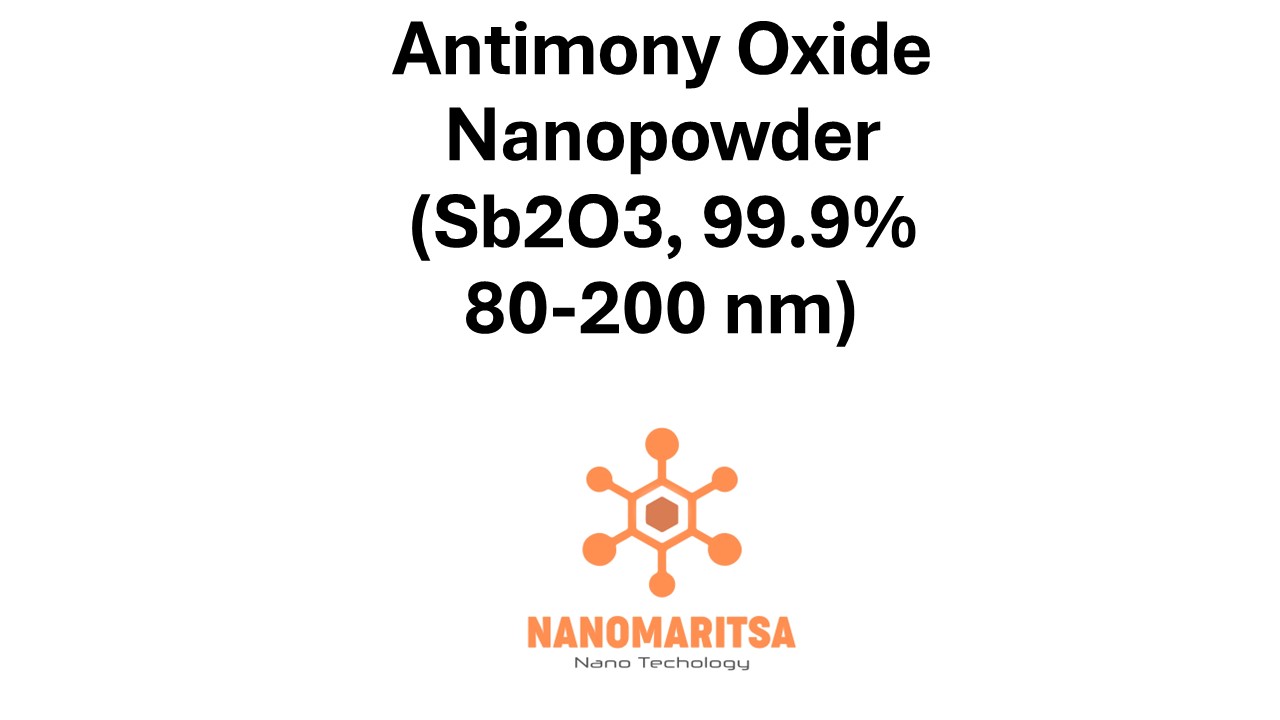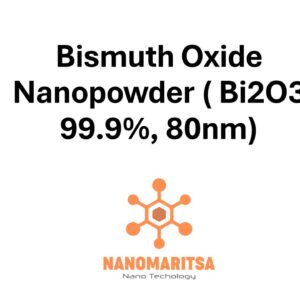Antimony oxide nanopowder (Sb2O3, 99.9%, 80-200 nm) is a high-purity material with significant applications in various industries such as electronics, flame retardants, and environmental protection. Its unique nanoscale properties, combined with its chemical stability and high surface area, make it a valuable material for research and industrial applications.
Composition and Structure
Sb2O3 (Antimony Oxide):
Antimony oxide, also known as antimony(III) oxide, is an inorganic compound consisting of antimony and oxygen. It is commonly used in the production of flame retardants, catalysts, and semiconductor materials. The compound is known for its high chemical stability, non-toxicity, and effectiveness in flame retardancy.
Purity (99.9%):
With a purity of 99.9%, this nanopowder has minimal impurities, ensuring reliable performance in high-precision applications such as catalysis and semiconductor technology. The high purity ensures that the material’s properties are consistent and free from contamination, which is crucial for high-performance use.
Particle Size (80-200 nm):
The particle size range of 80-200 nm allows the nanopowder to maintain a balance between surface area and structural integrity. While larger than many other nanopowders, this particle size range still provides enhanced surface reactivity and interactions with other materials, making it effective in its applications, especially in processes where larger particles are required to retain certain mechanical and chemical properties.
Properties
- High Surface Area:
The nanopowder form of Sb2O3 provides a higher surface area compared to bulk antimony oxide. This increased surface area enhances its chemical reactivity, making it highly effective in catalytic processes and reactions where surface interaction is critical. - Chemical Stability:
Sb2O3 is chemically stable and inert under a wide range of conditions, making it useful in environments where other materials might degrade or react. This stability is important in applications such as flame retardancy and as a stabilizing agent in various chemical processes. - Flame Retardancy:
Antimony oxide is widely used as a flame retardant, often in combination with halogenated compounds, to improve the fire resistance of materials. Its ability to form a stable, protective layer during combustion makes it effective in preventing the spread of flames. - Catalytic Activity:
Sb2O3 is used as a catalyst in certain chemical reactions. It can facilitate oxidation reactions and is often used in the production of other antimony compounds or as a catalyst in the production of polymer materials. - Electrical and Optical Properties:
Antimony oxide exhibits interesting electrical and optical properties, which are enhanced at the nanoscale. This makes it useful in specific semiconductor applications and in the development of thin-film coatings for optical devices.
Applications
1. Flame Retardants:
Flame Retardant Additive:
Antimony oxide is most commonly used as a flame retardant, particularly in plastics, textiles, and rubber. When combined with halogenated compounds, Sb2O3 significantly improves fire resistance by acting as a synergist, helping to reduce flammability and prevent ignition.
Fireproof Coatings:
In construction materials, Sb2O3 is used to create fire-resistant coatings that help protect structures from fire damage. The nanopowder form increases the surface area, improving the efficiency and effectiveness of these coatings.
2. Catalysis and Chemical Processes:
Catalyst in Organic Synthesis:
Sb2O3 is used as a catalyst in the synthesis of organic compounds, particularly in oxidation reactions. It plays a role in processes like the production of certain chemicals, polymers, and in the refinement of materials in the chemical industry.
Polymerization Catalyst:
In polymer chemistry, antimony oxide nanopowder is used in the polymerization of plastics, such as polyethylene terephthalate (PET), where it helps to control the polymerization process and improve the properties of the final material.
3. Electronics and Semiconductors:
Semiconductor Materials:
Antimony oxide is utilized in the electronics industry for its semiconductor properties. It is used in thin-film applications and as a component in the production of resistors, diodes, and other electronic components. The nanopowder form enhances the material’s properties for these specific uses.
Electrochromic Devices:
Sb2O3 is employed in electrochromic devices, where it helps control the coloration and opacity of materials in response to electrical stimuli. This has applications in devices like smart windows and displays.
4. Environmental Applications:
Pollutant Removal:
Antimony oxide nanopowder can be used to remove pollutants from water and air through adsorption processes. Its surface area allows it to capture and neutralize toxic substances, making it valuable for environmental cleanup efforts.
Environmental Catalysis:
Sb2O3 also plays a role in catalyzing reactions that break down pollutants in the atmosphere or in industrial waste. Its catalytic properties help reduce harmful emissions and contribute to cleaner industrial processes.
5. Research and Development:
Nanotechnology Studies:
As a nanoscale material, Sb2O3 nanopowder is used in research related to nanotechnology, including studies on nanomaterials, their interactions, and their potential applications in advanced technologies. Its properties at the nanoscale open up new avenues for exploring and utilizing antimony compounds in various high-tech fields.
Safety and Handling
Health Considerations:
Antimony oxide is considered to have low toxicity, but care should still be taken to avoid inhalation or direct contact with the skin or eyes, as nanopowders can pose risks due to their small size and high surface area. Appropriate protective equipment, such as gloves, goggles, and masks, should be used when handling the material.
Environmental Impact:
Research on the environmental impact of antimony oxide nanoparticles is ongoing. While Sb2O3 is not highly toxic, it is important to handle and dispose of the material properly to avoid potential environmental contamination, especially in aquatic ecosystems.
Summary
Antimony oxide nanopowder (Sb2O3, 99.9%, 80-200 nm) is a versatile material with a wide range of applications, particularly in flame retardancy, catalysis, and environmental protection. Its high surface area, chemical stability, and flame-retardant properties make it indispensable in industries such as electronics, construction, and chemicals. Additionally, its potential in semiconductor technologies and environmental remediation further highlights its importance in modern technology.
| Measurement (gr) | 100 grams, 500 grams, 1000 grams |
|---|






